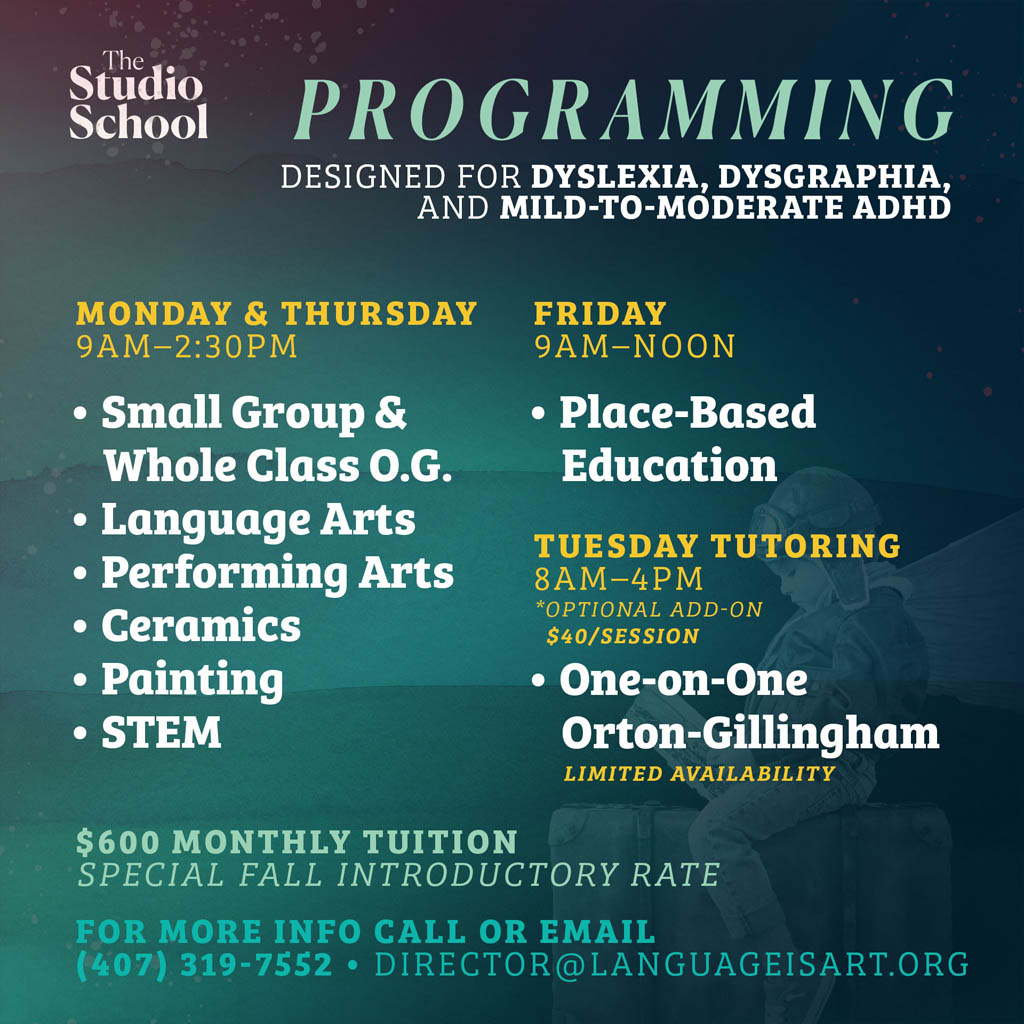
Our Programming
The Orton-Gillingham Approach is a direct, explicit, multisensory, structured, sequential, diagnostic, and prescriptive way to teach literacy when reading, writing, and spelling does not come easily to individuals, such as those with dyslexia. The Orton-Gillingham Approach always is focused upon the learning needs of the individual student. Orton-Gillingham (OG) practitioners design lessons and materials to work with students at the level they present by pacing instruction and the introduction of new materials to their individual strengths and weaknesses. Students with dyslexia need to master the same basic knowledge about language and its relationship to our writing system as any who seek to become competent readers and writers. However, because of their dyslexia, they need more help than most people in sorting, recognizing, and organizing the raw materials of language for thinking and use. Language elements that non-dyslexic learners acquire easily must be taught directly and systematically.
Arts integration provides multiple ways for students to make sense of what they learn (construct understanding) and make their learning visible (demonstrate understanding). It goes beyond the initial step of helping students learn and recall information to challenging students to take the information and facts they have learned and do something with them to build deeper understanding.
"In the arts students have central and active roles as meaning makers. This role demands that they not only acquire knowledge but they develop the capacity to reflect on what they are learning and to use it as they interpret and create works of art.”
There is a growing body of research in the field of arts integration. Multiple studies have shown that various models of arts integration improve students’ long-term retention of content. In the schools and classrooms where the arts are being used to teach the curriculum, students are more likely to remember what they learned weeks and months later. Arts integration also benefits students’ non-academic skills. Executive functioning skills (the skills used for goal directed behavior, such as inhibitory control, working memory, and flexible thinking) have been shown to be positively impacted by engaging in the arts(3). Additionally, arts integration methods have been shown to be linked to improvements in student engagement and student social-emotional skills.